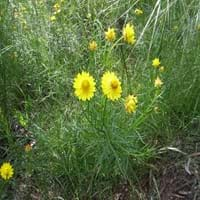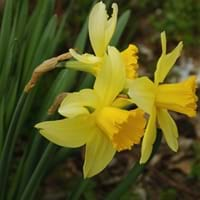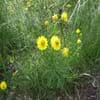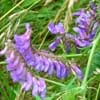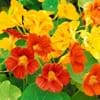Life Span
Annual
Perennial
Type
Flowering Plants, Herbs
Bulb
Origin
Australia
Asia, Central Asia, Eastern Asia, Southwest Europe
Types
Not Available
Accent, Acropolls, Cassata,Dellbes, Flower parade, Hawera
Number of Varieties
Not Available
Habitat
Terrestrial
Hillside, Open scrub, River side, Rocky areas, Scrubs, Woods
USDA Hardiness Zone
10-11
3-9
Sunset Zone
21,22
A2, A3, 1a, 1b, 2a, 2b, 3a, 3b, 4, 5, 6, 7, 8, 9, 10, 11, 12, 13, 14, 15, 16, 17, 18, 19, 20, 21, 22, 23, 24
Habit
Cushion/Mound-forming
Clump-Forming
Flower Color
Orange, Gold
Ivory, Lemon yellow, Peach, White, Yellow, Yellow green
Flower Color Modifier
Bicolor
Bicolor
Fruit Color
Non Fruiting Plant
Not Available
Leaf Color in Spring
Green, Dark Green
Green
Leaf Color in Summer
Green, Dark Green
Green
Leaf Color in Fall
Green, Dark Green
Green
Leaf Color in Winter
Light Green
Green
Plant Season
Summer, Fall
All year
Sunlight
Full Sun
Part sun
Type of Soil
Loam
Clay, Loamy, Sandy
The pH of Soil
Neutral
Acidic
Soil Drainage
Well drained
Well drained
Bloom Time
Spring, Late Spring, Early Summer, Summer, Late Summer, Early Fall, Fall, Late Fall
Early Spring, Late Spring, Spring
Tolerances
Drought
Black Walnut Toxicity
Where to Plant?
Container, Ground
Ground
How to Plant?
Seedlings
From bulbs
Plant Maintenance
Low
Medium
Watering Requirements
Needs less watering
It cannot sustain wet-feet, Keep the ground moist but not water-logged, Water Deeply, Water when soil is dry
In Summer
Lots of watering
Lots of watering
In Spring
Moderate
Moderate
In Winter
Average Water
Average Water
Soil Type
Well-aerated
Clay, Loamy, Sandy
Soil Drainage Capacity
Loam, Well drained
Well drained
Sun Exposure
Full Sun
Part sun
Pruning
Remove damaged leaves, Remove dead branches, Remove dead leaves
Cut or pinch the stems, Prune to control growth, Remove dead leaves, Remove dead or diseased plant parts
Fertilizers
General garden fertilizer
All-Purpose Liquid Fertilizer
Pests and Diseases
Pests and diseases free
Basal rot, Crown rot, Fire, Leaf spot, Scorch, Viruses
Plant Tolerance
Drought, Heat Tolerance
Drought
Flower Petal Number
Single, Double
Single, Double
Foliage Texture
Medium
Medium
Foliage Sheen
Matte
Matte
Attracts
Not Available
Not Available
Allergy
no allergic reactions
Asthma, Rhinoconjunctivitis
Aesthetic Uses
Showy Purposes, Water gardening
Showy Purposes
Beauty Benefits
Good for the Scalp, Removes dandruff, Stops hair loss
Not Available
Environmental Uses
Air purification
Air purification
Medicinal Uses
anti-allergy, anti-inflammatory, Antiseptic, Antispasmodic, Fungicidal
Asthma, Cold, Cough, Vomiting
Part of Plant Used
Flowers
Flowers, Leaves
Other Uses
Oil is used for aromatherapy, Used for its medicinal properties
Showy Purposes
Used As Indoor Plant
No
No
Used As Outdoor Plant
Yes
Yes
Garden Design
Bog Garden, Lawns and Turf
Not Available
Botanical Name
XEROCHRYSUM bracteatum 'Copper'
Narcissus
Common Name
Dreamtime Copper Strawflower, Strawflower
Daffodil
In Hindi
strawflower
हलका पीला
In German
Strohblume
Narzisse
In French
strawflower
Jonquille
In Spanish
strawflower
Narciso
In Greek
strawflower
ασφόδελος
In Portuguese
strawflower
Abrótea
In Polish
strawflower
żonkil
In Latin
strawflower
Asphodelus
Phylum
Magnoliophyta
Magnoliophyta
Class
Magnoliopsida
Liliopsida
Order
Asterales
Asparagales
Family
Asteraceae
Amaryllidaceae
Genus
Xerochrysum
Narcissus
Clade
Angiosperms, Asterids, Eudicots
Angiosperms, Monocots
Tribe
Gnaphalieae
Narcisseae
Subfamily
Asteroideae
Amaryllidoideae
Season and Care of Strawflower and Daffodil
Season and care of Strawflower and Daffodil is important to know. While considering everything about Strawflower and Daffodil Care, growing season is an essential factor. Strawflower season is Summer and Fall and Daffodil season is Summer and Fall. The type of soil for Strawflower is Loam and for Daffodil is Clay, Loamy, Sandy while the PH of soil for Strawflower is Neutral and for Daffodil is Acidic.
Strawflower and Daffodil Physical Information
Strawflower and Daffodil physical information is very important for comparison. Strawflower height is 25.40 cm and width 30.50 cm whereas Daffodil height is 1.25 cm and width 1.25 cm. The color specification of Strawflower and Daffodil are as follows:
Strawflower flower color: Orange and Gold
Strawflower leaf color: Green and Dark Green
Daffodil flower color: Ivory, Lemon yellow, Peach, White, Yellow and Yellow green
- Daffodil leaf color: Green
Care of Strawflower and Daffodil
Care of Strawflower and Daffodil include pruning, fertilizers, watering etc. Strawflower pruning is done Remove damaged leaves, Remove dead branches and Remove dead leaves and Daffodil pruning is done Cut or pinch the stems, Prune to control growth, Remove dead leaves and Remove dead or diseased plant parts. In summer Strawflower needs Lots of watering and in winter, it needs Average Water. Whereas, in summer Daffodil needs Lots of watering and in winter, it needs Average Water.
